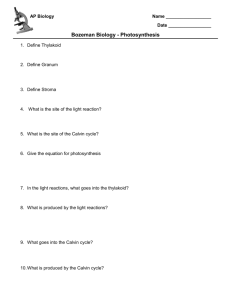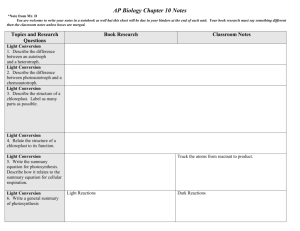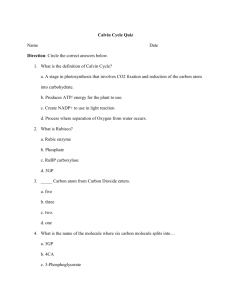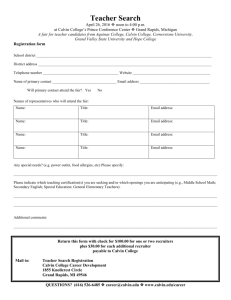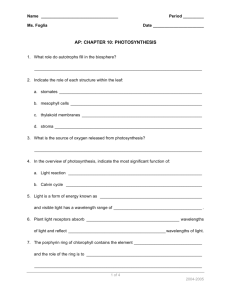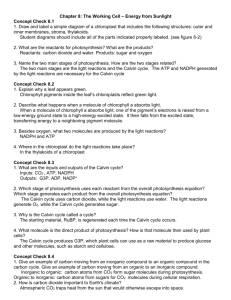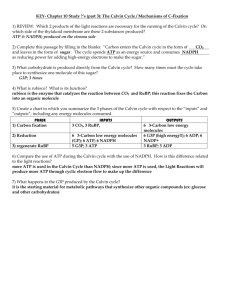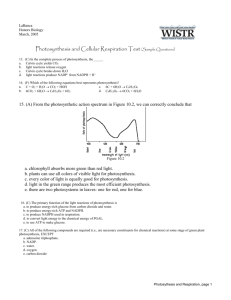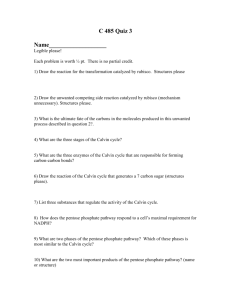Photosynthesis: The Calvin Cycle
advertisement
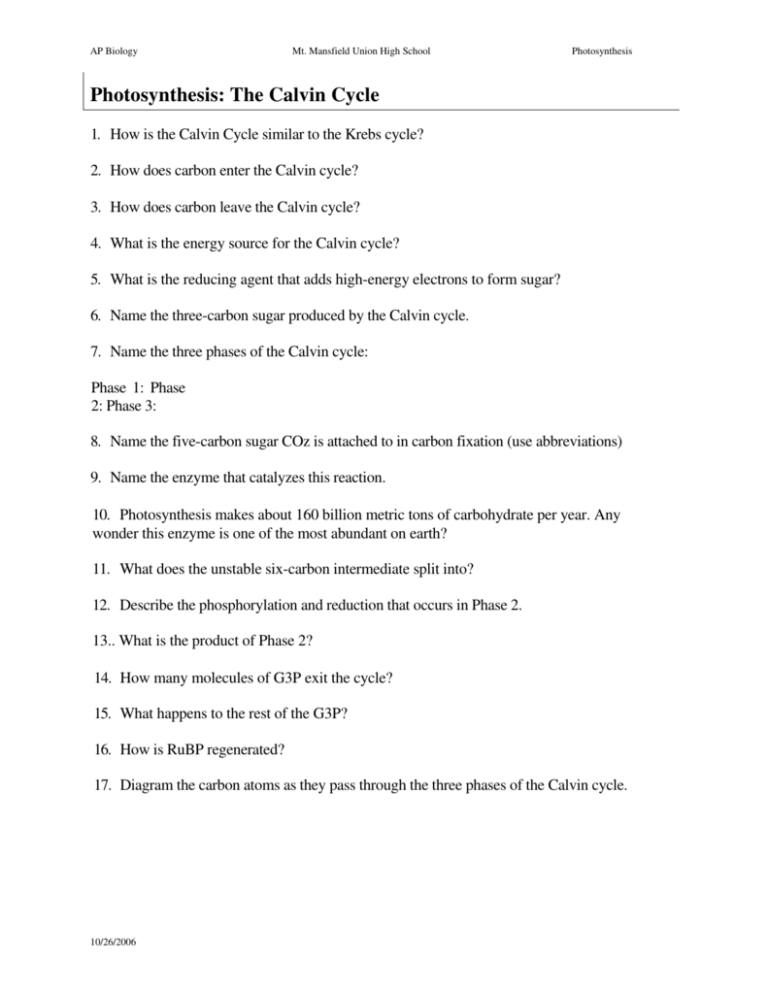
AP Biology Mt. Mansfield Union High School Photosynthesis Photosynthesis: The Calvin Cycle 1. How is the Calvin Cycle similar to the Krebs cycle? 2. How does carbon enter the Calvin cycle? 3. How does carbon leave the Calvin cycle? 4. What is the energy source for the Calvin cycle? 5. What is the reducing agent that adds high-energy electrons to form sugar? 6. Name the three-carbon sugar produced by the Calvin cycle. 7. Name the three phases of the Calvin cycle: Phase 1: Phase 2: Phase 3: 8. Name the five-carbon sugar COz is attached to in carbon fixation (use abbreviations) 9. Name the enzyme that catalyzes this reaction. 10. Photosynthesis makes about 160 billion metric tons of carbohydrate per year. Any wonder this enzyme is one of the most abundant on earth? 11. What does the unstable six-carbon intermediate split into? 12. Describe the phosphorylation and reduction that occurs in Phase 2. 13.. What is the product of Phase 2? 14. How many molecules of G3P exit the cycle? 15. What happens to the rest of the G3P? 16. How is RuBP regenerated? 17. Diagram the carbon atoms as they pass through the three phases of the Calvin cycle. 10/26/2006 AP Biology Mt. Mansfield Union High School Photosynthesis 18. Indicate the ATP and NADPH used in each phase. 19. How many ATP and NADPH are used to produce one glucose molecule? 20. Define photorespiration. 21. Why does photorespiration occur? 22. Some plants (soybeans) may lose as much as 50% of the carbon fixed by the Calvin cycle to photorespiration. Describe the adaptations of C4 and CAM plants to hot, arid conditions. Examples C4 CAM 10/26/2006 Adaptation
